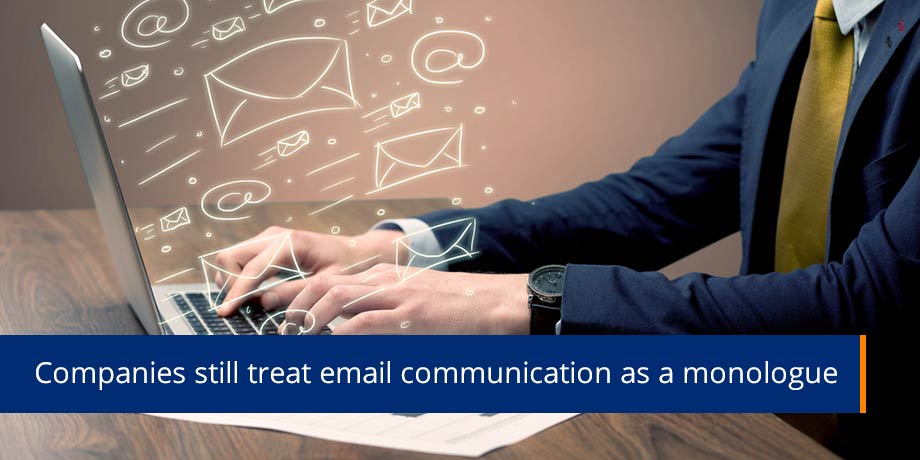
Today I received an email from a bank with the subject line: Private Bank: Your direct access to Top Management.
The email started off with: “At XX Private Bank, we’re well aware that your time is your greatest luxury . . .” and ended off with the Regional Manager’s personal details.
First problem: I’m no longer a customer of this particular Private Bank, and haven’t been for upward of a year (but that’s for another rant . . . I mean blog post, entitled “Please manage your data”).
Second problem: it was addressed to DEAR PRIVATE BANK CLIENT. Enough said.
Companies still treat email communication as a monologue
What horrified me the most was that the email came from a no-reply mailbox.
Frowning, I looked through the rest of my regular supplier communication, and guess what? There are still loads of companies that treat email communication as a monologue. Unbelievable!
This business of sending emails from a [email protected] address and actually advertising in the content that “this mailbox is not monitored”, is just plain bad practice. Why do they think it’s okay to push out email communication without a reply path? Is my time less important than theirs?
Companies reap the cost and efficiency benefits of sending emails to customers: transactional notifications, personalized documents, triggered communication – all cost much less to deliver electronically than a phone call or posted letter.
Why make it less than 100% convenient for the recipient to send back a reply?
Don’t you want your customers to engage with you?
Your marketing department spends millions trying to get your customers to engage in a dialogue with your company. There’s a whole team of people paid to find out what customers think. Yet communication that is guaranteed to be sent to customers, such as statements, invoices, transactional notifications, are often treated as monologues.
Not to mention the deliverability problems that come along with having “do not reply” in the email address or body copy. Have you tested your delivery rates on no-reply emails? You’ll be shocked at how many don’t get delivered or get pushed straight to junk mail folders.
Worship the dialogue
Appoint a team to take charge of managing responses to your outgoing electronic communication. A lot of what you get back might be rubbish, but can you really take the risk of missing the pearl of wisdom in a suggestion from a customer? Or worse, ignoring the desperately disgruntled customer who takes his comments into the public domain after receiving no reply from you?
Inbound message management doesn’t require a massive call center. All you need is a team of well trained agents using decent electronic messaging software that manages inbound communications in the same way as you manage inbound calls. There are applications smart enough to filter spam and bounce backs, and to route emails based on your customer service business rules. This is not rocket science.
You have to encourage the dialogue, nurture the conversation and value the feedback. And making it difficult for customers to engage with your company is just plain bad practice and a missed opportunity.















